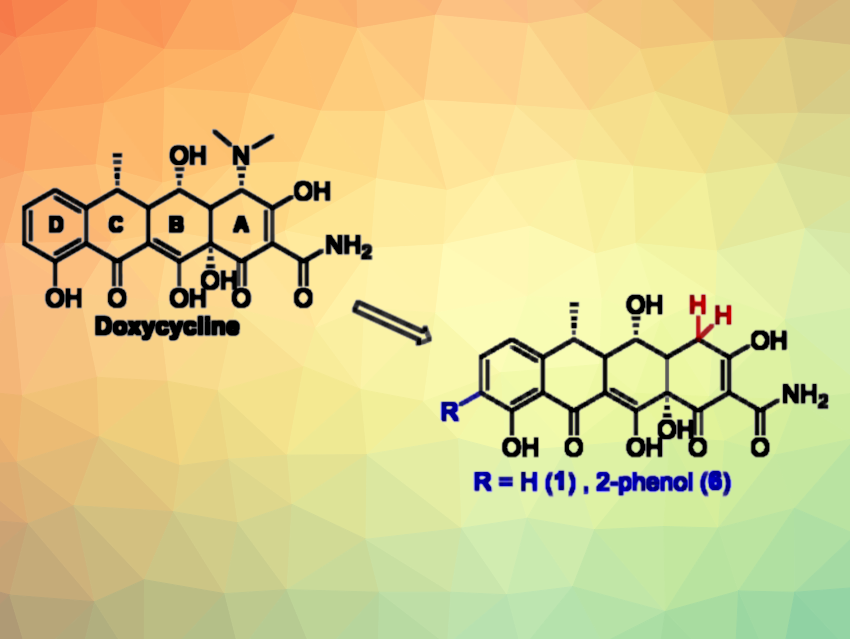Parkinson’s disease, a progressive nervous system disorder, has no real cure so far, with current drugs merely treating its symptoms. A promising approach is to slow down or stop neurodegeneration using neuroprotective drugs. Doxycycline, a semi-synthetic tetracycline antibiotic commonly used to treat bacterial infections, can disrupt the aggregation of α-synuclein, a protein implicated in Parkinson’s disease. However, its long-term use poses risks of antibiotic resistance and disruption of the gut microbiome.
Rita Raisman-Vozari, Sorbonne Université, CNRS, Paris, France, Laurent Ferrié, Bruno Figadère,
CNRS, Université Paris-Saclay, Orsay, France, and colleagues have designed 18 new doxycycline
derivatives in a search for non-antibiotic tetracyclines that could serve as drug candidates for the treatment of Parkinson’s disease. The team reduced the dimethylamino group at C4 (pictured in red) to eliminate the antibiotic activity and performed coupling reactions at position C9 of the aromatic D ring (pictured in blue) to create a range of derivatives.
Among the resulting candidates, the researchers identified two non-antibiotic doxycycline derivatives with superior α-synuclein anti-aggregating and anti-inflammatory properties compared with doxycycline (pictured, R = H or 2-phenol). According to the team, ongoing research aims to further investigate the neuroprotective potential of these compounds.
- C9‐Functionalized Doxycycline Analogs as Drug Candidates to Prevent Pathological α‐Synuclein Aggregation and Neuroinflammation in Parkinson’s Disease Degeneration,
Laurent Ferrié, Bruno Figadère, Clémence Rose, Rodrigo Hernán Tomas-Grau, Rosana Chehín, Brenda Zabala, Patrick Pierre Michel, Rita Raisman-Vozari, Jean-Michel Brunel,
ChemMedChem 2024.
https://doi.org/10.1002/cmdc.202300597




